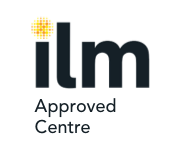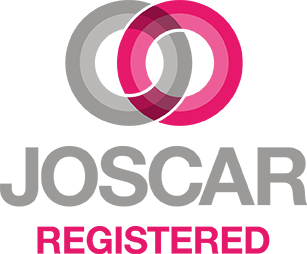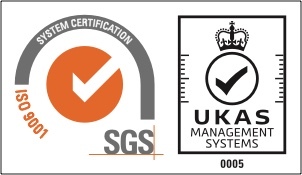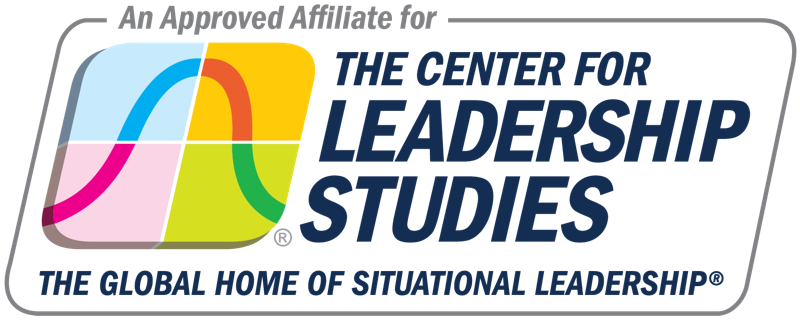
An article in The Guardian revealed the extent to which we are unconsciously biased in the UK. 67% of the British public admit to feeling uncomfortable talking to a disabled person. Gay and lesbian job seekers are 5% less likely to get an interview. 80% of employers admit to making decisions based on regional accents.
The effects of unconscious or unintentional bias resonate throughout the entire structure of an organisation. From the people you hire, to the processes in place, unconscious bias affects everything and everyone and most of the time it is usually unrecognised.
Unconscious bias occurs when people favour others who look like them and/or share their values. For example, a person may be drawn to someone with a similar educational background, from the same area, or who is the same colour or ethnicity as them.
It is important for leaders and managers to be aware of their own biases because of the negative, and often drastic, impact that it can have on both strategies and processes.
What is unconscious bias?
Scientists believe that stereotypes in general serve a purpose because clustering people into groups with expected traits help us navigate the world without being overwhelmed by information. The downside is that the potential for prejudice is hard-wired into human cognition. Your background, personal experiences, societal stereotypes and cultural context can have an impact on your decisions and actions without you realising.
Implicit or unconscious bias happens by our brains making incredibly quick judgements and assessments of people and situations without us realising. Your unconscious brain processes information 200,000 times faster than your conscious mind. It looks for patterns, and it influences your behaviour whether you like it or not - probably without you even being aware of what’s going on.
The ability to make quick decisions and judgements can be helpful, but it can also lead to mistakes. Our biases are influenced by our background,cultural environment and personal experiences. We may not even be aware of these views and opinions, or be aware of their full impact and implications.
Each of us maintains unconscious beliefs about various social and identity groups, and these biases stem from one’s tendency to organise a social world by categorising. Unconscious bias can be more prevalent than we realise and it can also be more difficult to free from workplaces. Unconscious bias is more predominant than conscious prejudice.
For example, you may unconsciously associate women with family more than working roles, or you may associate people of other ethnicities with negative personality traits. You may believe that older people have less to offer in the workplace, or you may believe the same thing about younger people. These are unconscious biases, also known as implicit biases.
There are many types of unconscious bias and, without realising it, you're probably guilty of them already.
Here are some of the main biases that can affect workplaces:
Affinity bias - the tendency to 'warm up' to people who are like yourself
Halo effect - the tendency to think that everything about a person is good simply because you like them
Perception bias - the tendency to believe one thing about a group of people based on stereotypes and assumptions, making it impossible to be objective about individuals
Confirmation bias - the tendency to seek to confirm your pre-existing ideas and assumptions about a group of people
Group think - the tendency to try too hard to fit into an existing culture, mimicking others and holding back thoughts or opinions, resulting in the loss of identity, creativity and innovation.
The impact of unconscious bias in the workplace
The evidence is overwhelming that unconscious bias seeps into decisions that affect areas from recruitment, to outcomes in criminal justice, in ways that can disadvantage some people. For example, without even realising it, when evaluating male and female job candidates, we often revert to our preconceived gender norms and societal gender roles.
A manager who wasn't successful at school may listen to, or be supportive of, an employee who left school without qualifications because, subconsciously, they are reminded of their younger self. The same can be true of a manager who is educated to degree level, favouring employees who have also been to university. This is known as affinity bias, because they feel an affinity with the person that has similar life experiences.
Another form of unconscious bias is known as the halo effect. This is where a positive trait is transferred onto a person without anything really being known about that person. For example, those who dress conservatively are often seen as more capable in an office environment, based purely on their attire.
Our unconscious biases affect every decision we make, and they lead to warped outcomes.
For example, here are the results of various different academic studies, compiled by researchers at the University of North Carolina Kenan-Flagler Business School:
- Blonde women’s salaries were 7% higher than brunettes or redheads
- For every 1% increase in a woman’s body mass, there was a 0.6% decrease in family income
- 'Mature-faced' people had a distinct career advantage over 'baby-faced' people
- Both male and female scientists were more likely to hire men, rank them higher in competency than women, and pay them $4,000 more per year than women
- Job applicants with 'typically white' names received 50% more call backs than those with 'typically black' names
- 58% of Fortune 500 CEO's are almost six feet tall, whereas only 14.5% of the overall male population are that size
These outcomes are clearly unfair on those who come out on the wrong side of society’s widely shared stereotypes. That, in itself, is a good enough reason for any ethical business leader to want to take steps to overcome bias.
If people are getting unfair advantages, or disadvantages, based on such arbitrary criteria, the logical conclusion is that some well-qualified people are missing out on the opportunities they deserve, and their employers are missing out on the talents they could have contributed. The flipside of this is that some of the people who are being promoted may not necessarily be the best candidates.
Last year, Starbucks sparked headlines after the police were called on two black men who were in the restaurant conducting business. Along with a remorseful apology, the company pledged to close down every location for mandatory unconscious bias training. This news appeared in all major newspapers and therefore damaged the Starbucks brand, as well as reducing productivity whilst all staff attended training. Hence, unconscious bias in the workplace has implications for a company’s bottom line.
Where unconscious bias is against a protected characteristic, it can be discriminatory. For example, if during a recruitment process an employer ignores the skills and experience of a candidate who is a different race than them and appoints another candidate who is the same race, this could be discriminatory.
In a business context, your implicit biases could end up leading you to any of the following problems:
- Hiring the wrong candidate for a job
- Misunderstanding your customers
- Undervaluing employees and not getting the most out of them
- Causing talented employees to get frustrated and leave
- Promoting unsuitable employees beyond their abilities
- Damaging your brand reputation
- Opening you up to discriminatory legal action
Just imagine how you'd feel if someone was discriminating against you, based on some superficial aspect of who you are!
If a team member does feel you have discriminated against him or her, even unwittingly, it could impact you in a number of ways. They could begin a grievance procedure against you or even leave your organisation, citing discrimination as the reason. Make sure that you understand the discrimination laws that apply in the country where you work, and that you understand your rights and responsibilities, and those of your people.
It is important to anticipate situations which are likely to lead to bias or have led to discrimination in the past, and create systems to eliminate or lessen the likelihood of these behaviours from occurring. Whether we realise it or not, an unconscious bias thrives in our society.
The Benefits of Diversity
Diversity refers to the variety of differences between people, which can include race, gender, age, sexuality, education, and social class.
Worldwide urbanisation, communication and mobility have increased workplace diversity and will likely continue to do so.
"Gender, ethnic and cultural diversity, particularly within executive teams, continue to be correlated to financial performance across multiple countries worldwide." McKinsey & Company
Organisations that tackle unconscious bias have the advantage of embracing a diverse workforce and creating systems that support diversity can reap numerous benefits:
Increased adaptability - a team of people from different backgrounds can provide a greater variety of perspectives and solutions to problems
Better customer service - diverse people bring a greater range of skills and abilities along with empathy for different cultures, which can better meet the needs of customers around the world
Greater innovation - organisations with diverse leadership tend to perform better at this. A Forbes study has identified workforce diversity and inclusion as a key driver of internal innovation and business growth.
Easier recruitment and retention - welcoming candidates regardless of race, gender, age or background means you can hire from a larger pool of people, meaning that you are more likely to hire the best people on the job market. Embracing diversity can also improve existing staff members' loyalty to your organisation
Tackling unconscious bias in the workplace
You can address these discrimination issues by increasing your awareness of your unconscious biases, and by developing plans that make the most of the talents and abilities of your team members:
1. Recognise your own biases
You need to be honest with yourself about the stereotypes that affect you. For example, you may consciously think that men and women are equally effective leaders but, as a woman, you believe that men perhaps don't have the same level of empathy and people skills as women. This bias could influence your actions so that male candidates could be excluded from certain roles or positions.
2. Examine behaviours
It’s essential to look at the linkage between unconscious bias and behaviours. Because unconscious bias is not something we are actively aware of, it in itself is difficult to actually eradicate. It is effective practice to analyse how unconscious bias can manifest in the workplace when hiring employees, evaluating employee performance and in the overall treatment of employees.
If we understand some of the many ways in which our biases seep into our work behaviours, we may be better equipped to improve those behaviours. Once employees have an understanding of behaviours that are the result of individual biases, alternative behaviours can be implemented.
3. Focus on people
Rather than thinking about the characteristics of someone's ethnicity, gender or background, focus on them as an individual. Give them merit on the evidence you see in front of you, rather than what you're expecting based on your own biases.
4. Increase exposure to biases
Once you've identified what your biases are, try exposing yourself to them more regularly. This might sound like confirmation bias, but if you seek to prove your biases wrong it can have a positive impact on your behaviour.
Using the example of women being better at showing empathy than men, if you seek out stories of men who have shown great empathy and been highly successful as a result, it will start to challenge your bias.
5. Policies and procedures
Another approach to tackling unconscious bias should include the standardisation of company policies, protocol, and procedures. Managers should be uniformly trained, and any job selection process should focus on objective and quantifiable measures. A review of policies and procedures can identify biased policies and modification should take place.
6. Training
Unconscious bias, if left unchecked can turn into discrimination. We all have unconscious biases, so by providing awareness training, employees are given the opportunity to learn more about it.
Training teaches them how to recognise potential biased behaviour and how to combat it in daily decision-making. Awareness training can also create conversations about what biases exist within the company, and what steps the company can take towards minimising them.
Educating business leaders and employees will enable individuals to realise when they’re being biased and take appropriate action.
GBS can help you identify and deal with unconscious bias in your workplace
Unconscious bias forms the building blocks of how an organisation operates and if not correctly managed can create real, tangible vulnerabilities that ultimately decide whether an organisation succeeds or fails.
The GBS Corporate Training Unconscious Bias course is for leaders and managers who want to develop the skills required to change both behaviours and mindsets, practice fairer thinking and maintain an inclusive environment.
Unconscious bias is another aspect of management. By spending time raising the awareness and understanding of unconscious bias, more staff will question their own prejudices. After all, if employees become aware that they are being influenced by their stereotypes or assumptions, you’ve started a dialogue that can help to eradicate bias from your workplace.
During your training, we will demonstrate the benefits of tackling the effects of unconscious bias to avoid discriminatory acts in business and the workplace. We help participants discover for themselves the invisible barriers that are raised by their own minds and how such natural tendencies can be counter-acted.
The course covers the impact unconscious bias can have in decision making, exploring risks from ‘stereotype threat’ and the types of unconscious bias. We will explore how to remain compliant with relevant legislation and develop an inclusive approach in your organisation. Like all our other courses, it can be modified or customised to meet your organisation’s specific needs
For managers and HR, you can also benefit from our Diversity and Inclusion training too, so that you have a firm grip on how to deal with any issues that may arise.






